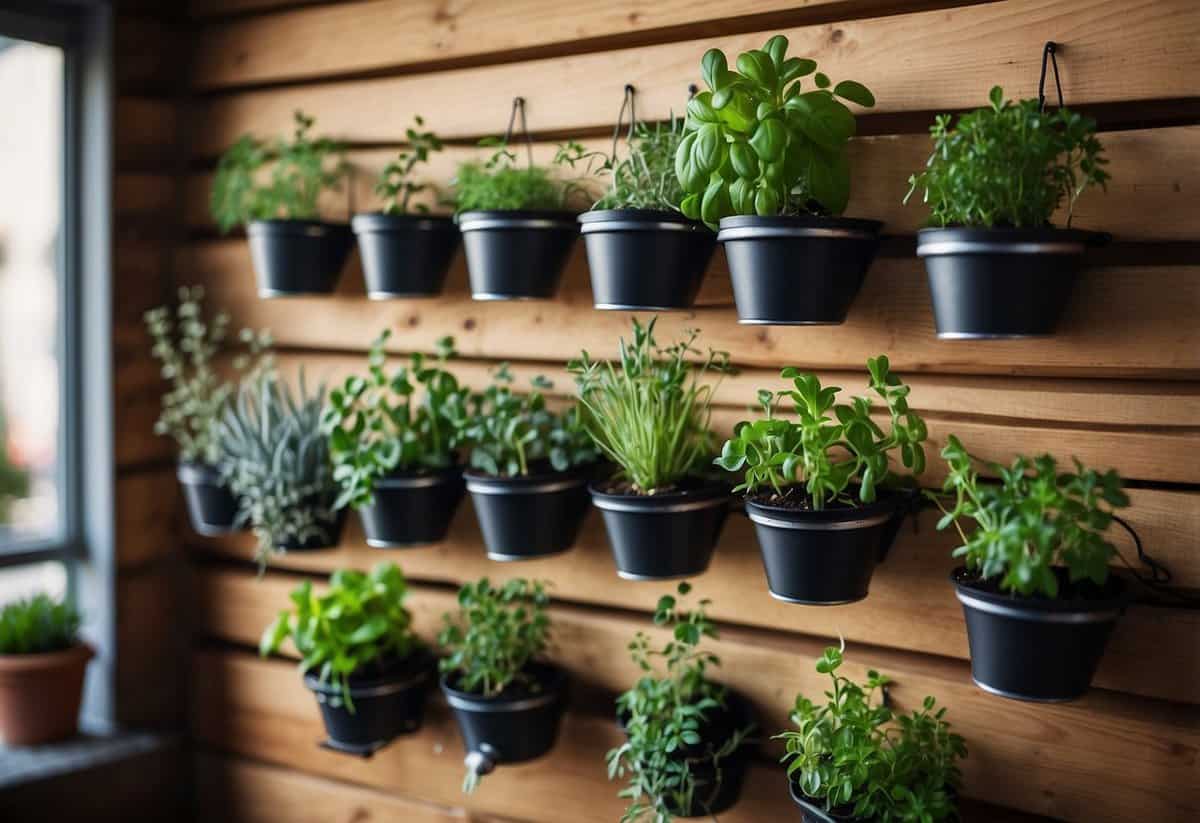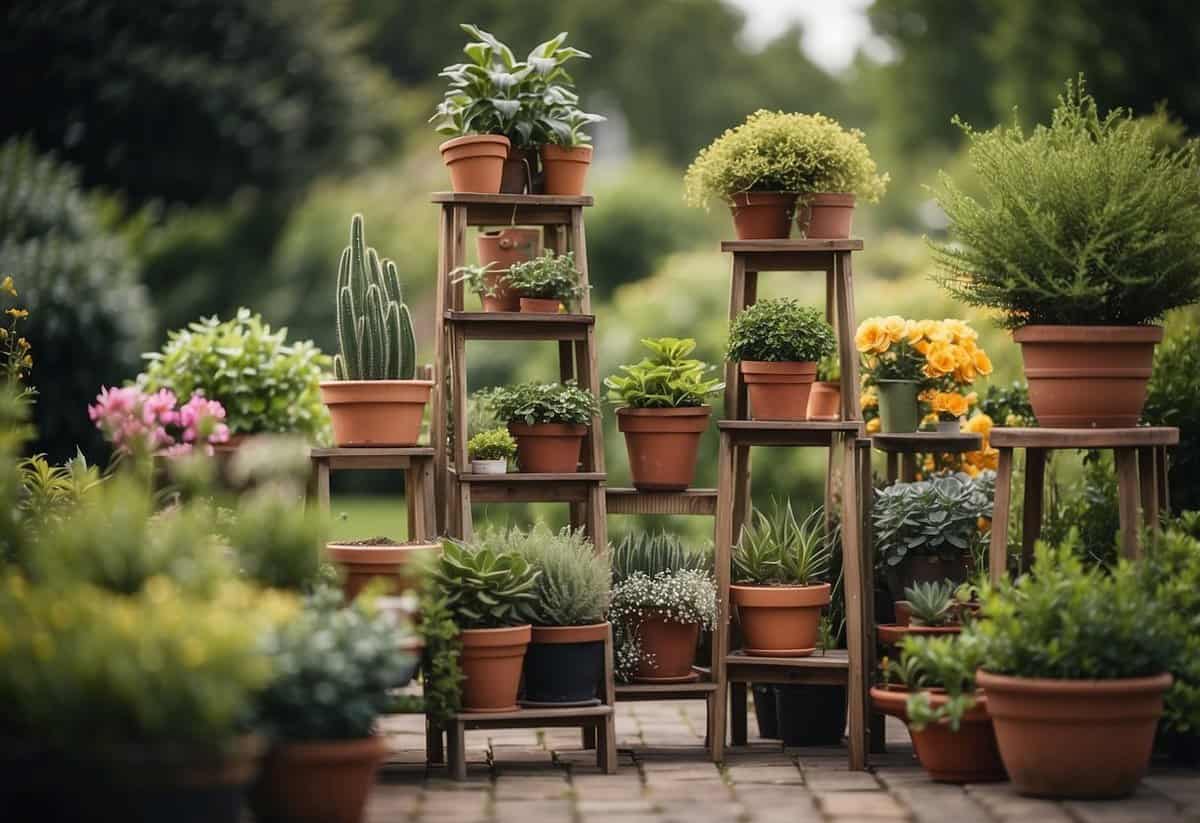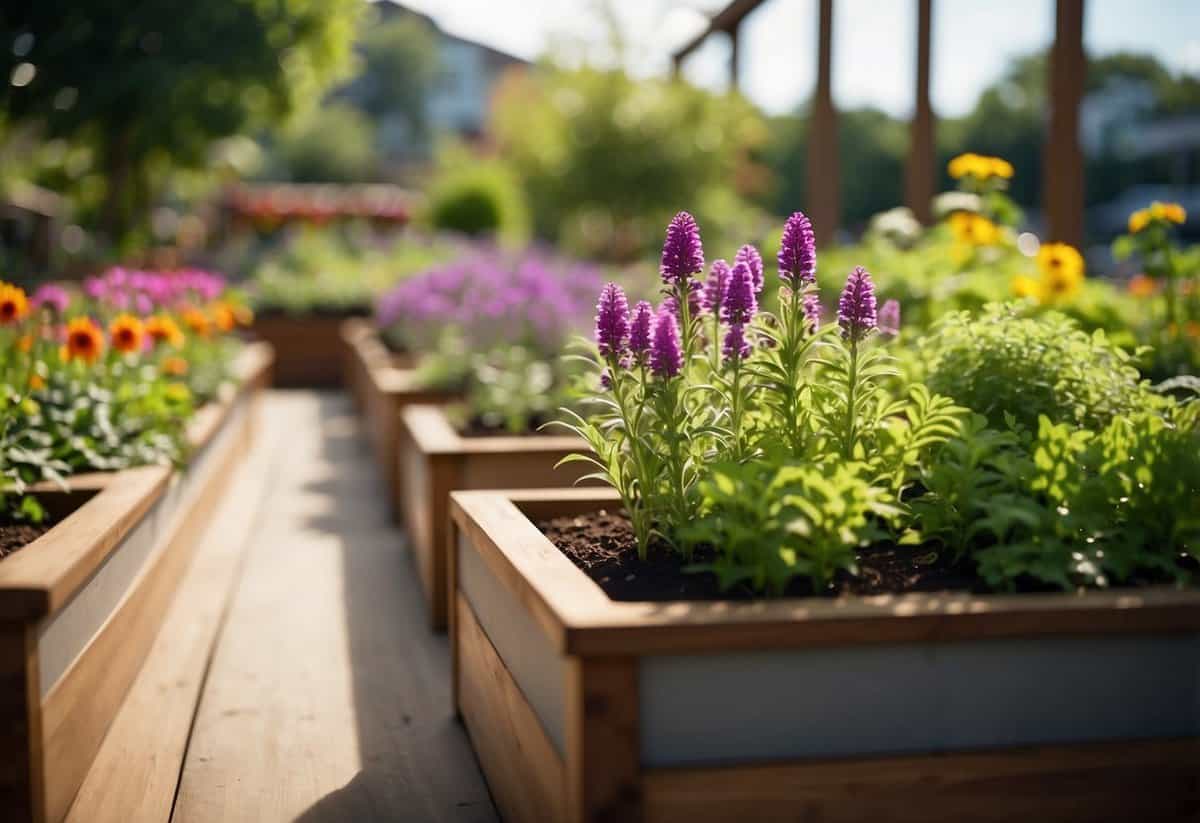Garden Ideas Off the Ground: Creative Vertical Solutions
Creating a garden off the ground brings many benefits to your gardening experience. Raised garden beds or vertical gardens can not only save space but also improve soil quality and ease maintenance. What are some practical and creative ways you can take your garden off the ground?

From DIY raised beds to innovative vertical garden structures, there’s a wide range of ideas to explore. Whether you have a small backyard or a larger space, these solutions can help you make the most of your garden area.
1) Vertical Garden Planters

Vertical garden planters are a great way to make the most out of small spaces. By going vertical, you can grow a variety of plants without taking up much ground space.
One simple idea is to use a wooden pallet. Secure it to a wall, and fill it with small pots or plant directly in the pallet.
Another option is to hang planters from a wooden slat wall. This method not only saves space but also adds a decorative touch to your garden. Find more ideas at The Spruce.
2) Hanging Tomato Baskets

Growing tomatoes in hanging baskets is a great way to maximize space in your garden. Choose varieties like Tumbling Tom or Red Robin, which are well-suited for containers.
Use high-quality potting soil and add a slow-release fertilizer to support growth. Make sure to water your hanging baskets daily, especially during hot and dry conditions for healthy plants.
Hang your baskets in a sunny spot, as tomatoes need at least six hours of direct sunlight daily. Regular feeding with a potassium-rich liquid fertilizer helps encourage fruit formation.
3) Wall-Mounted Herb Gardens

Wall-mounted herb gardens are a great way to maximize space. You can put them in your kitchen or on an outdoor wall.
Using mason jars on wooden boards is a popular idea. It’s simple and stylish. Another option is small paint cans mounted on a piece of wood. For a different look, try vertical gardens with hanging shelves and terra-cotta pots.
Get creative! Your wall can turn into a beautiful and functional herb garden.
4) Raised Garden Beds

Raised garden beds are a great way to grow plants off the ground. They help improve soil drainage and give you better control over soil quality. You can build them in many sizes and shapes to fit your space.
Plants in raised beds are easier to reach, so they’re perfect if you have trouble bending over. Raised beds can also protect your plants from pests. Check out these raised garden bed plans to get started.
5) DIY Pallet Gardens

DIY pallet gardens are a great way to use old wooden pallets and grow your plants up off the ground. You can find many creative and easy ways to make them yourself.
One idea is to turn a pallet into a vertical herb garden by adding small pots or fabric pockets to the slats. It’s perfect for keeping fresh herbs close at hand.
Another fun project involves creating a square pallet garden. You can stack several pallets, fill them with soil, and grow plants from all sides. It’s simple and offers lots of growing space.
6) Stackable Planters

Stackable planters are perfect for small spaces. They allow you to grow up instead of out. You can find them at stores like Costco or Home Depot.
These planters are great for vegetables, herbs, and flowers. Try planting lettuce, spinach, basil, or even small tomatoes. They’re easy to manage and look great in any garden setup.
Simply stack them up and watch your garden thrive!
7) Hanging Flower Pots

Hanging flower pots are a simple and beautiful way to add greenery to your garden.
You can easily make your own by wrapping twine or string around the edge of a pot and securing it to a sturdy hook or tree limb.
For a creative touch, use glass bottles to display flowers. These can add a unique charm to any outdoor space.
Mix and match different flowers and colors to create a vibrant display that brightens up your garden.
8) Tiered Plant Stands

Tiered plant stands are great for adding height and dimension to your garden. You can use different materials like metal, wood, or even terracotta pots to create these stands.
An easy idea is to repurpose old materials. For example, you can turn a folding tray table into a unique plant stand.
Another idea is to stack pots of decreasing sizes to make a terracotta pot stand. This way, you can display multiple plants in a small area.
9) Garden Trellises

Garden trellises can make your outdoor space more charming. They provide support for climbing plants like ivy, roses, and beans.
You can create a rustic trellis using posts, poplar twigs, and twine. This adds a natural feel to your garden.
For a more structured look, try building a triangular bean trellis. It’s perfect for vegetables like peas and cucumbers.
Create privacy by using taller trellises with dense climbers like ivy. This helps you make a cozy, private retreat in your backyard with beautiful greenery.
You can find more ideas at Country Living and The Spruce.
10) Living Wall Kits

Living wall kits make it easy for you to create a vertical garden at home. These kits come with everything you need, from planters to mounting hardware.
You can find kits that suit different spaces and styles. Some even include built-in irrigation systems to keep your plants healthy.
For inspiration on how to set up your living wall, check out these vertical garden ideas.
Benefits of Elevated Gardening

Elevated gardening brings many perks to your garden. It’s great for easy access and also helps keep pests away, making it a popular choice.
Accessibility
One of the best parts about elevated gardening is how much easier it is to reach your plants. You don’t have to bend over or get on your knees. This is especially helpful for those with back or knee problems. Raised garden beds or elevated planters let you tend to your plants while standing or sitting comfortably.
When your plants are raised, you also have better control over your gardening tasks. You can easily see what needs watering, weeding, or harvesting. This makes the job more enjoyable and less of a strain on your body.
Pest Control
Keeping plants off the ground helps keep them safer from pests. Many bugs and small critters find it harder to reach the plants. By raising your garden, you can reduce the chances of pests ruining your hard work. For example, slugs and snails have a tougher time climbing up elevated beds.
Elevated planters also give you more control over soil quality. Good soil can help your plants grow strong and stay healthy, giving them a better chance to fight off pests naturally. Using mulch also helps. It keeps weeds at bay and holds moisture, making your garden less attractive to unwanted insects.
Creating an Elevated Garden

An elevated garden can save space, make gardening easier on your back, and add a unique aesthetic to your yard. To set up a thriving elevated garden, you need to focus on the right containers, proper soil and fertilization, and effective watering techniques.
Choosing the Right Containers
Picking the right containers is crucial. Look for deep containers that allow roots to grow freely. Materials like wood, metal, and plastic each have advantages.
Wooden containers are aesthetically pleasing and provide good insulation but may require treatment to prevent rotting. Metal containers are durable but can heat the soil quickly in direct sunlight, which might harm plants. Plastic containers are lightweight and often cheaper, but they can deteriorate over time.
Ensure containers have drainage holes to prevent waterlogging, which could drown your plants. Size matters too: larger containers are better for vegetables with deep roots, while smaller ones suit herbs and flowers.
Soil and Fertilization
The right soil mix will help your plants thrive. Use a blend of garden soil, compost, and perlite or vermiculite. This mix ensures good drainage and rich nutrients for your plants. Compost adds organic matter and improves soil structure, while perlite/vermiculite keeps the soil light and airy.
Fertilize your elevated garden regularly. Slow-release fertilizers can provide a steady supply of nutrients over time. For vegetable gardens, use a fertilizer higher in phosphorus and potassium to promote blooming and fruiting.
Manure or organic compost can also be excellent sources of nutrients. Regularly check the pH levels of your soil and adjust as needed to match the requirements of your specific plants.
Watering Techniques
Watering an elevated garden requires careful management. Elevated planters dry out faster than in-ground gardens. Use drip irrigation systems or soaker hoses to keep the soil consistently moist.
Water plants early in the morning to reduce evaporation and allow foliage to dry during the day, which helps prevent disease. Mulching can also help retain moisture and regulate temperature.
Check the soil regularly by sticking your finger into the soil up to the first knuckle; if it feels dry, it’s time to water. Remember, over-watering can be just as harmful as under-watering, so balance is key.







